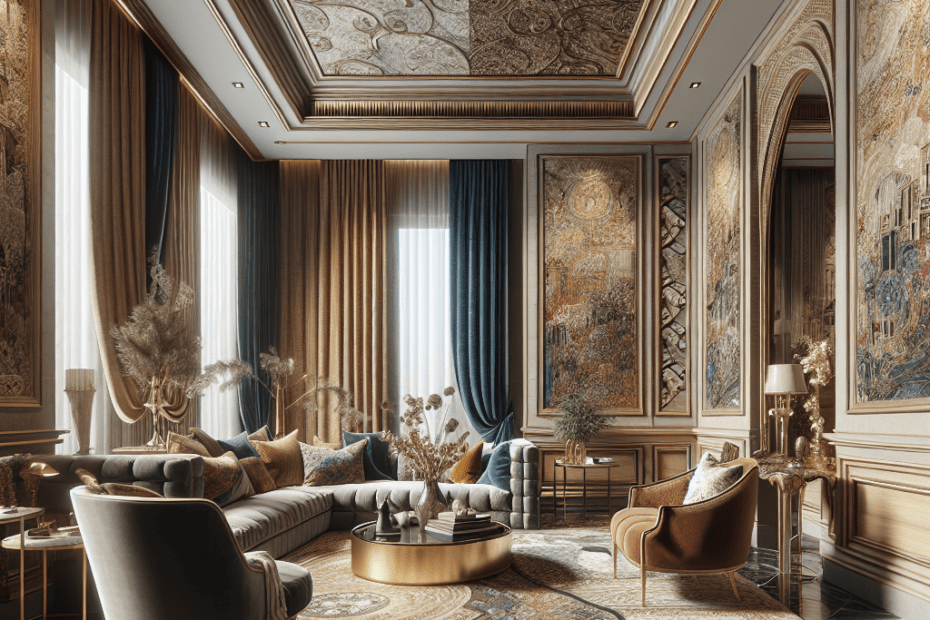“`html
The Role of Textured Wallpaper in Maximalist Design
Maximalist design is an exciting style that celebrates vibrant colors, bold patterns, and diverse textures. In recent years, textured wallpaper has become an essential element in achieving this dynamic aesthetic. Using textured wallpaper in maximalism allows for creative expression through layering, pattern play, and sensory exploration.
The Rise of Maximalism
Maximalism embraces the philosophy of “more is more.” Instead of the minimalist preference for simplicity, maximalists opt for rich details. According to Statista, the home decor market, where maximalist trends thrive, is projected to reach $665 billion by 2028, growing at a compound annual rate of 4.8% from 2021 to 2028. With this growth, textured wallpaper plays a pivotal role in adding depth and interest in maximalist homes.
Benefits of Textured Wallpaper
Textured wallpaper is an excellent tool for adding personality and flair to a room. Below are some benefits it brings to maximalist designs:
| Benefits | Details |
|---|---|
| Depth and Dimension | Textured wallpaper can make flat, boring walls come to life by adding layers of interest. |
| Visual and Tactile Interest | Designed to appeal to the sense of touch, they add sensory depth, making rooms feel more engaging. |
| Versatility in Design | Diverse patterns and textures suit various themes, from vintage to bohemian. |
| Cover Imperfections | Textured wallpaper can effectively mask imperfections and variations in wall surfaces. |
Choosing the Right Textured Wallpaper
For those who seek to incorporate textured wallpaper in their maximalist design, careful selection is necessary. Varied options include embossed patterns, grasscloth, fabric, and metallic finishes. Each type impacts the space differently and should align with the desired mood and style of the room.
Embossed patterns provide depth and are perfect for those looking to add a sophisticated touch. Grasscloth wallpapers offer an organic feel, ideal for bohemian themes. Fabric wallpapers deliver a luxurious appearance, great for elegant spaces. Lastly, metallic finishes can add a touch of glamor, brightening up the room.
Applying Textured Wallpaper
Placing textured wallpaper thoughtfully enhances the spatial dynamics of a room. Accent walls create focal points without overwhelming the space, while entire rooms enveloped in patterns build immersive environments. Consider how sunlight interacts with textures, as this can influence the overall look by highlighting certain areas.
Moreover, combining textured wallpaper with other elements like vibrant paintings, eclectic furniture, and unique decor pieces amplifies the maximalist look. To avoid visual chaos, maintaining a consistent color theme while varying patterns and materials can help in balancing the room’s design.
Key Takeaways
- Textured wallpaper adds depth, dimension, and sensory interest to maximalist spaces.
- The home decor market, including maximalist trends, is experiencing growth, emphasizing the importance of creative wall treatments.
- Diverse wallpaper textures cater to various styles, and each type influences a space’s ambiance differently.
- Strategic placement and combination with other decor elements ensure an impactful design without becoming overpowering.
FAQs
1. What is maximalist design?
Maximalist design is a style that embraces bold colors, complex patterns, and rich textures to create vibrant living spaces.
2. Why is textured wallpaper ideal for maximalism?
Textured wallpaper enhances depth and interest, allowing for creative layering and sensory engagement, critical elements in maximalist aesthetics.
3. Can textured wallpaper be used in any room?
Yes, textured wallpaper can be used in any room, but the choice of pattern and texture should complement the room’s purpose and desired mood.
4. How does textured wallpaper compare to paint?
Textured wallpaper provides more dimensionality and tactile interest than paint, which is generally flat. It is better for creating intricate designs and covering wall flaws.
5. Are there any drawbacks to using textured wallpaper?
The main drawback is the potential difficulty in application and removal, as well as the initial cost, though the visual and tactile benefits often outweigh these concerns.
“`
This blog post provides insights into the use of textured wallpaper in maximalist design, capturing attention with its aesthetic potential while informing about trends and best practices for application.
